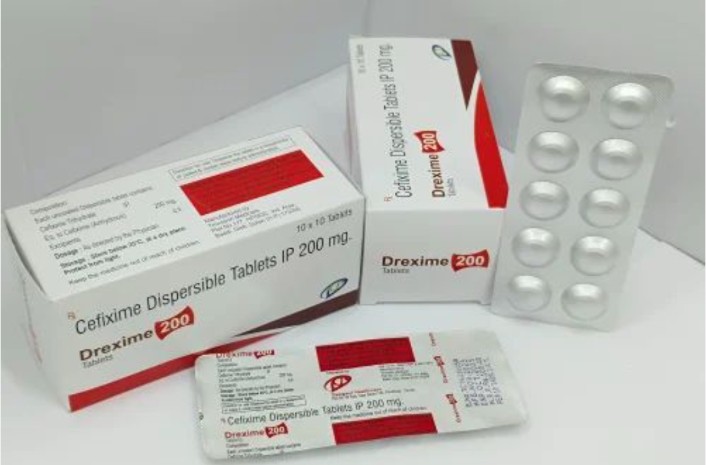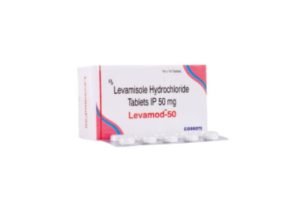
Cefixime Full Review
Description:
Cefixime is a third-generation cephalosporin antibiotic commonly used to treat a variety of bacterial infections. It works by inhibiting bacterial cell wall synthesis, leading to cell death. Cefixime is effective against a broad spectrum of Gram-negative bacteria and some Gram-positive organisms, making it a versatile antibiotic for both adults and children. It is available as an oral formulation, providing a convenient option for outpatient therapy.
Available Forms & Strengths:
- Tablets:
- 200 mg
- 400 mg
- Oral Suspension (Powder for Reconstitution):
- 100 mg/5 mL
- 200 mg/5 mL
Uses:
Cefixime is prescribed for the treatment of various infections caused by susceptible bacteria, including:
- Respiratory Tract Infections:
- Acute bronchitis
- Pharyngitis
- Tonsillitis
- Sinusitis
- Pneumonia (in some cases)
- Urinary Tract Infections (UTIs):
- Acute cystitis
- Pyelonephritis
- Uncomplicated Gonorrhea:
- Cefixime is often prescribed as a single-dose treatment for uncomplicated gonorrhea of the cervix, urethra, or rectum.
- Otitis Media:
- Cefixime is effective in treating middle ear infections, especially in children.
- Typhoid Fever (Off-label in some regions):
- In certain countries, cefixime is used for the treatment of typhoid fever, although other antibiotics are often preferred.
Side Effects:
Common Side Effects:
- Gastrointestinal:
- Nausea
- Vomiting
- Diarrhea
- Abdominal pain
- Central Nervous System:
- Headache
- Dizziness
- Allergic Reactions:
- Rash
- Urticaria (hives)
- Pruritus (itching)
- Liver Enzymes:
- Elevated liver enzymes may occur, typically reversible after discontinuation.
Serious but Rare Side Effects:
- Clostridium difficile-associated diarrhea:
- Prolonged antibiotic use can disrupt normal gut flora, leading to severe diarrhea and colitis.
- Anaphylaxis and severe hypersensitivity reactions:
- Immediate discontinuation is required if signs of a serious allergic reaction occur.
- Stevens-Johnson syndrome:
- Though rare, this life-threatening skin reaction is possible with cefixime.
- Kidney or liver dysfunction:
- Cefixime can sometimes cause acute kidney injury or affect liver function, though these effects are rare.
Dosage:
- Adults and children over 12 years (or >50 kg):
- Usual dose: 200 mg to 400 mg per day, either as a single dose or in two divided doses.
- Uncomplicated gonorrhea: A single 400 mg dose.
- Children (under 12 years or <50 kg):
- Oral suspension: 8 mg/kg/day, given as a single dose or in two divided doses.
- Renal Impairment:
- For patients with renal impairment, dose adjustments are necessary based on creatinine clearance levels.
Contraindications:
- Hypersensitivity: Contraindicated in patients with known hypersensitivity to cefixime, other cephalosporins, or any components of the drug formulation.
- Cross-reactivity: Caution is advised for patients allergic to penicillins, as cross-reactivity between cephalosporins and penicillins is possible.
Warnings:
- Allergic Reactions:
- Immediate allergic reactions, including anaphylaxis, can occur. Patients with a history of penicillin allergy should use cefixime cautiously.
- Clostridium difficile-associated diarrhea:
- Cefixime, like many broad-spectrum antibiotics, may disrupt the normal bacterial flora in the gut, leading to overgrowth of C. difficile, a pathogen that can cause severe diarrhea and colitis.
- Superinfections:
- Prolonged use of cefixime can result in the overgrowth of non-susceptible organisms, including fungi. Secondary infections such as yeast infections may occur during long-term therapy.
- Renal and Liver Function:
- Close monitoring of kidney and liver function is recommended in patients with pre-existing conditions or when cefixime is used long-term.
- Hemolytic Anemia:
- Cephalosporins, including cefixime, have been associated with immune-mediated hemolytic anemia in rare cases. Discontinue the drug immediately if hemolysis is suspected.
Special Instructions:
- Food:
- Cefixime can be taken with or without food, although taking it with food may help reduce gastrointestinal side effects.
- Completion of Full Course:
- It is important to complete the entire course of antibiotics as prescribed, even if symptoms improve early, to avoid bacterial resistance.
- Renal Monitoring:
- Patients with renal impairment should be closely monitored, and dosage adjustments may be required based on kidney function.
- Alcohol:
- Avoid excessive alcohol consumption during treatment, as it may increase the risk of liver dysfunction.
- Suspension Storage:
- After reconstitution, the oral suspension should be refrigerated and used within the prescribed period (usually 14 days). Shake well before each use.
Pregnancy and Lactation:
- Pregnancy Category B:
- Animal studies have not shown risk to the fetus, but there are no well-controlled studies in pregnant women. Cefixime should be used during pregnancy only if clearly needed.
- Lactation:
- It is unknown whether cefixime is excreted in human milk. Caution should be exercised if cefixime is administered to a breastfeeding mother.
Key Points:
- Cefixime is a broad-spectrum, orally administered cephalosporin antibiotic effective against a variety of bacterial infections, including respiratory infections, UTIs, and uncomplicated gonorrhea.
- It is generally well-tolerated but may cause gastrointestinal disturbances and allergic reactions in some patients.
- Dose adjustments are required for patients with renal impairment, and the full course of treatment should be completed to prevent bacterial resistance.
- Cefixime can be safely used in both adults and children, and it offers the convenience of oral dosing.
Cefixime is widely used in clinical practice for its ease of use, broad spectrum of activity, and once-daily dosing, making it a preferred option for many common bacterial infections.







